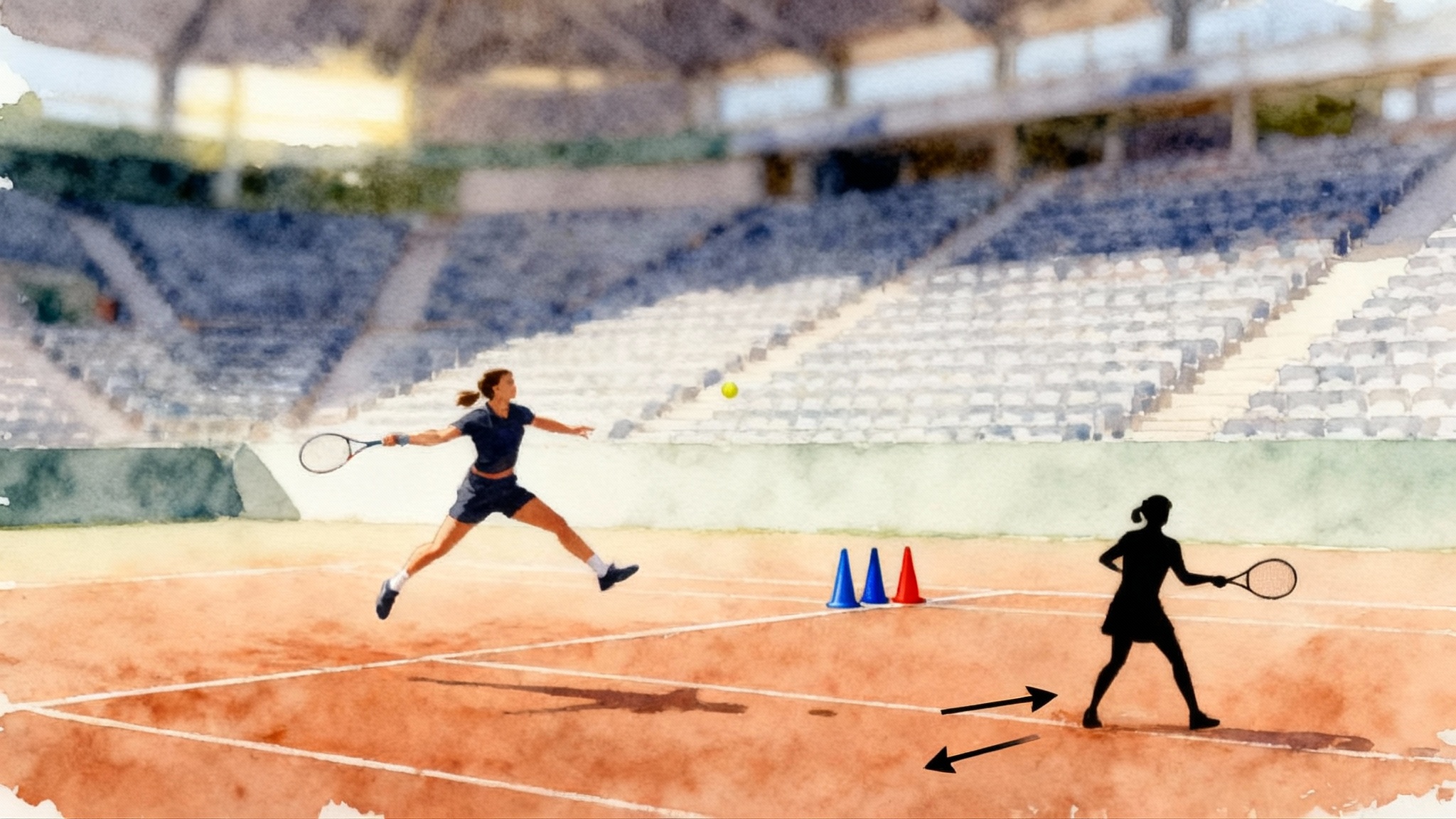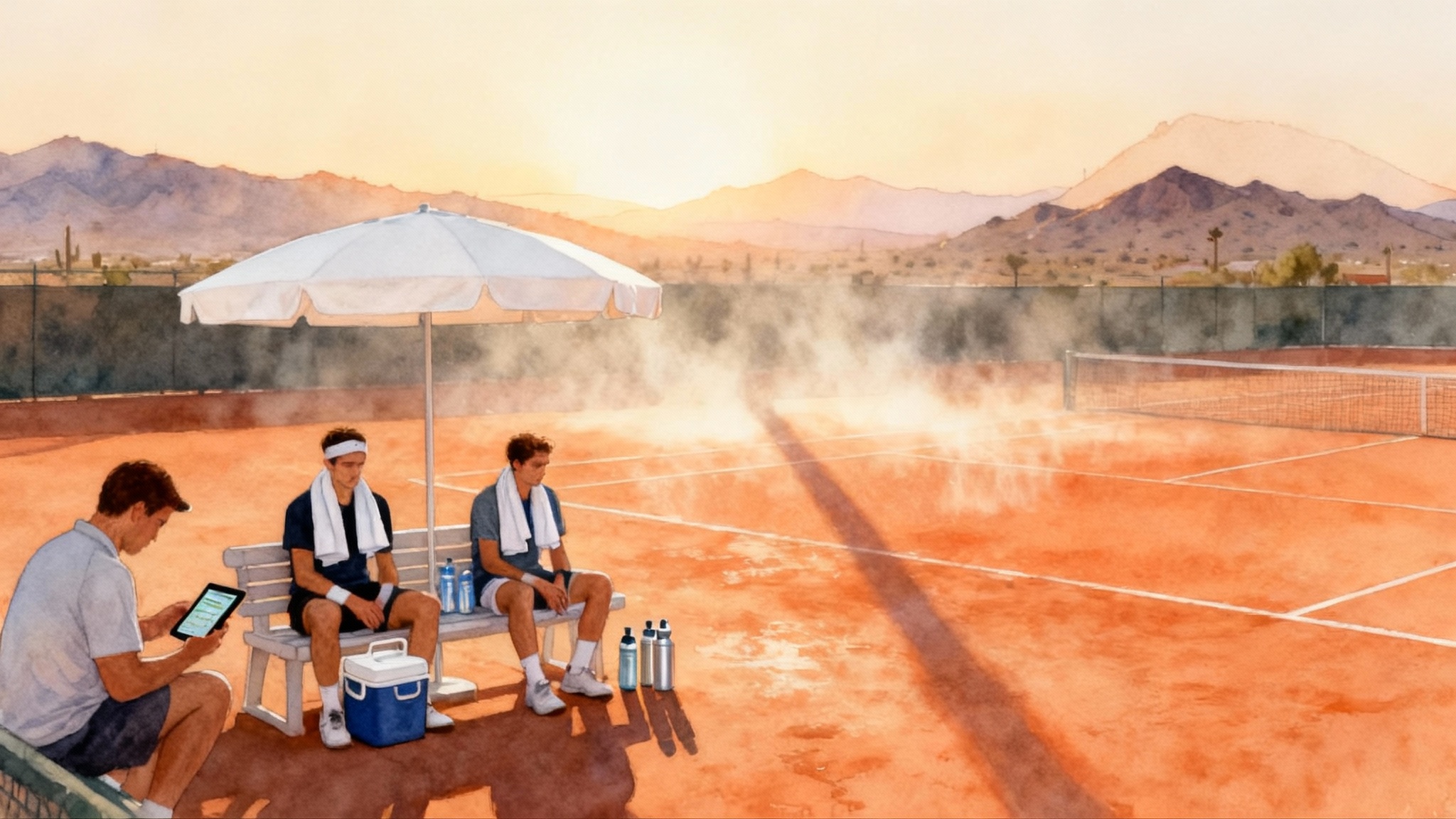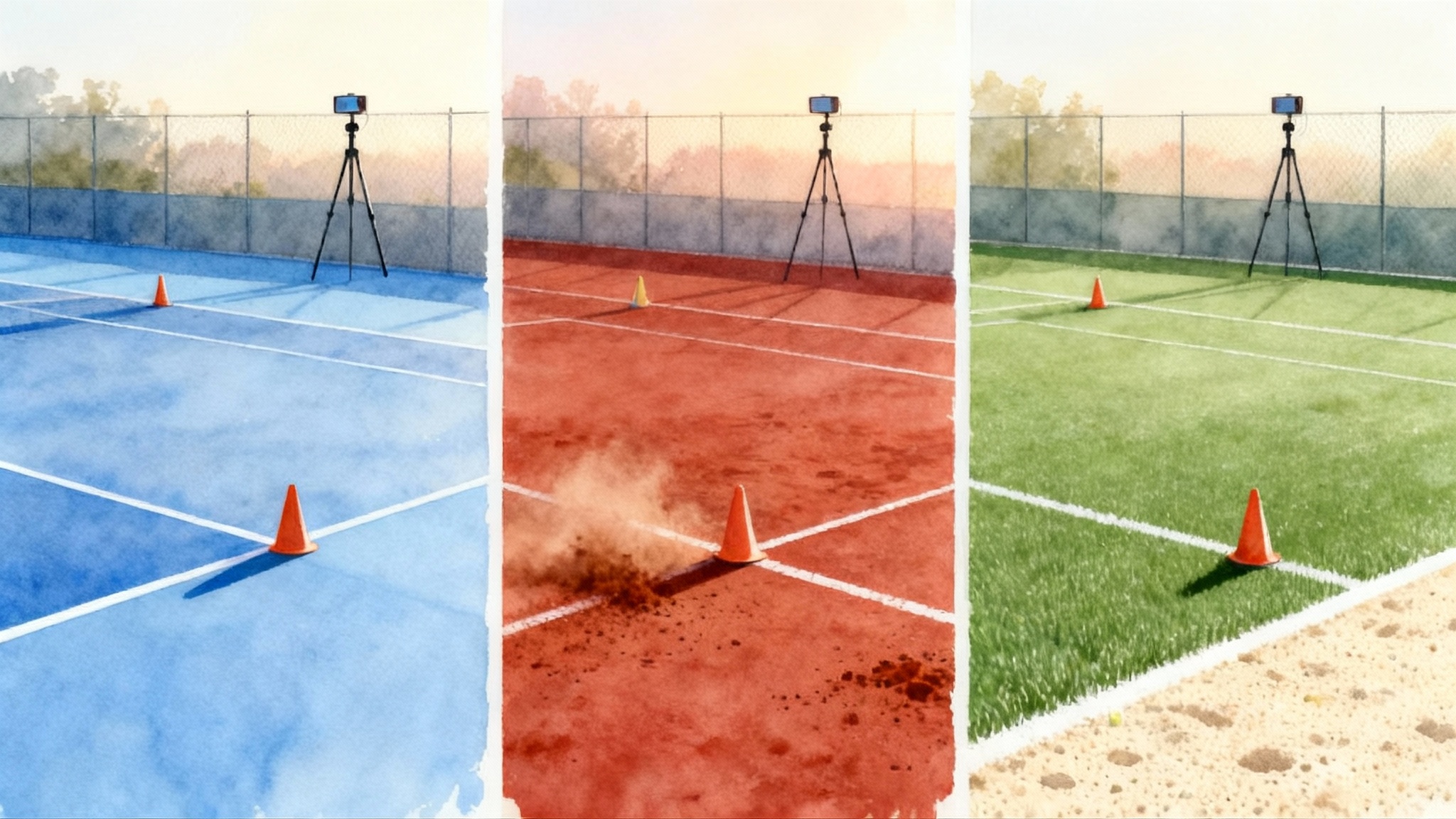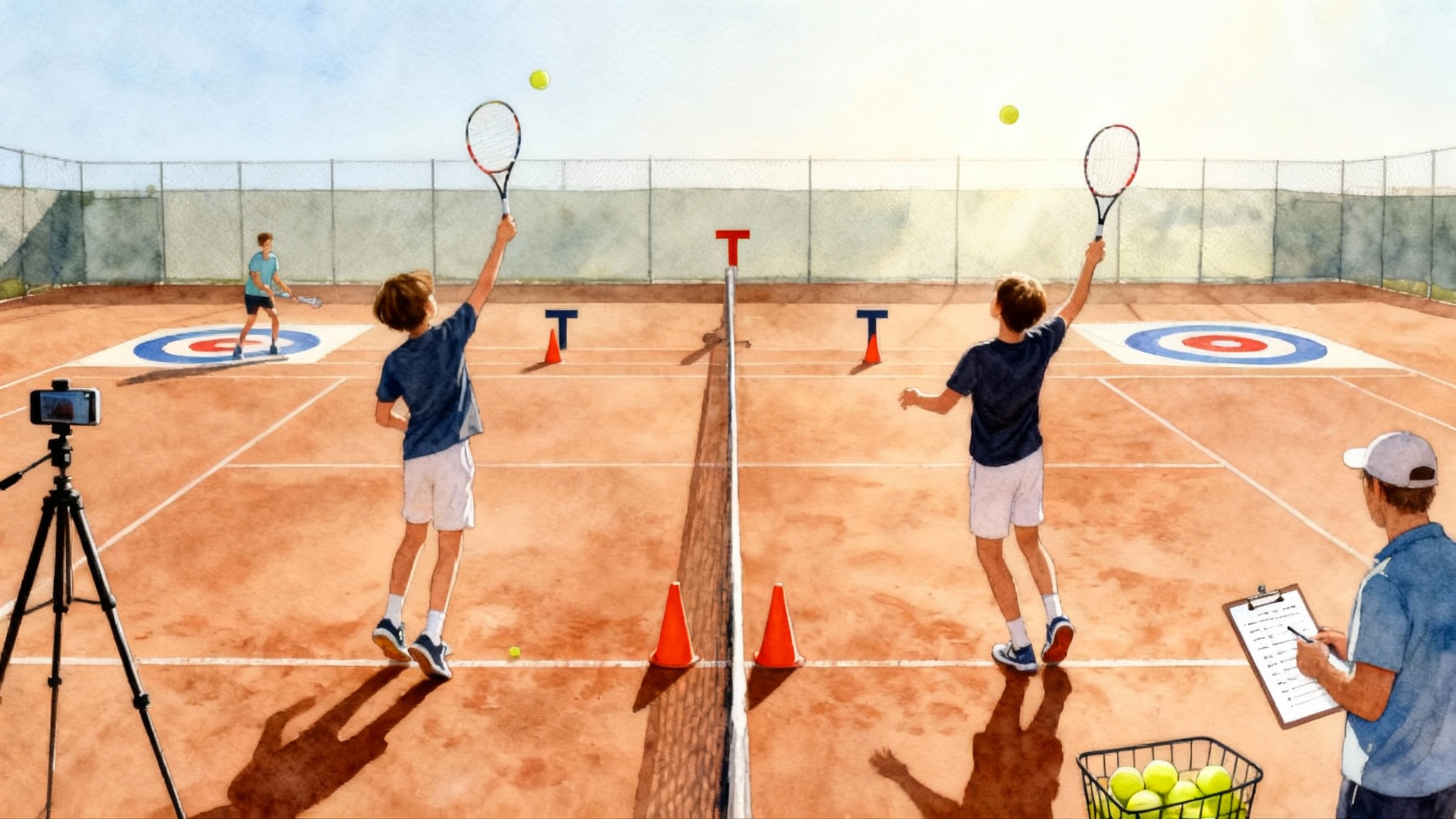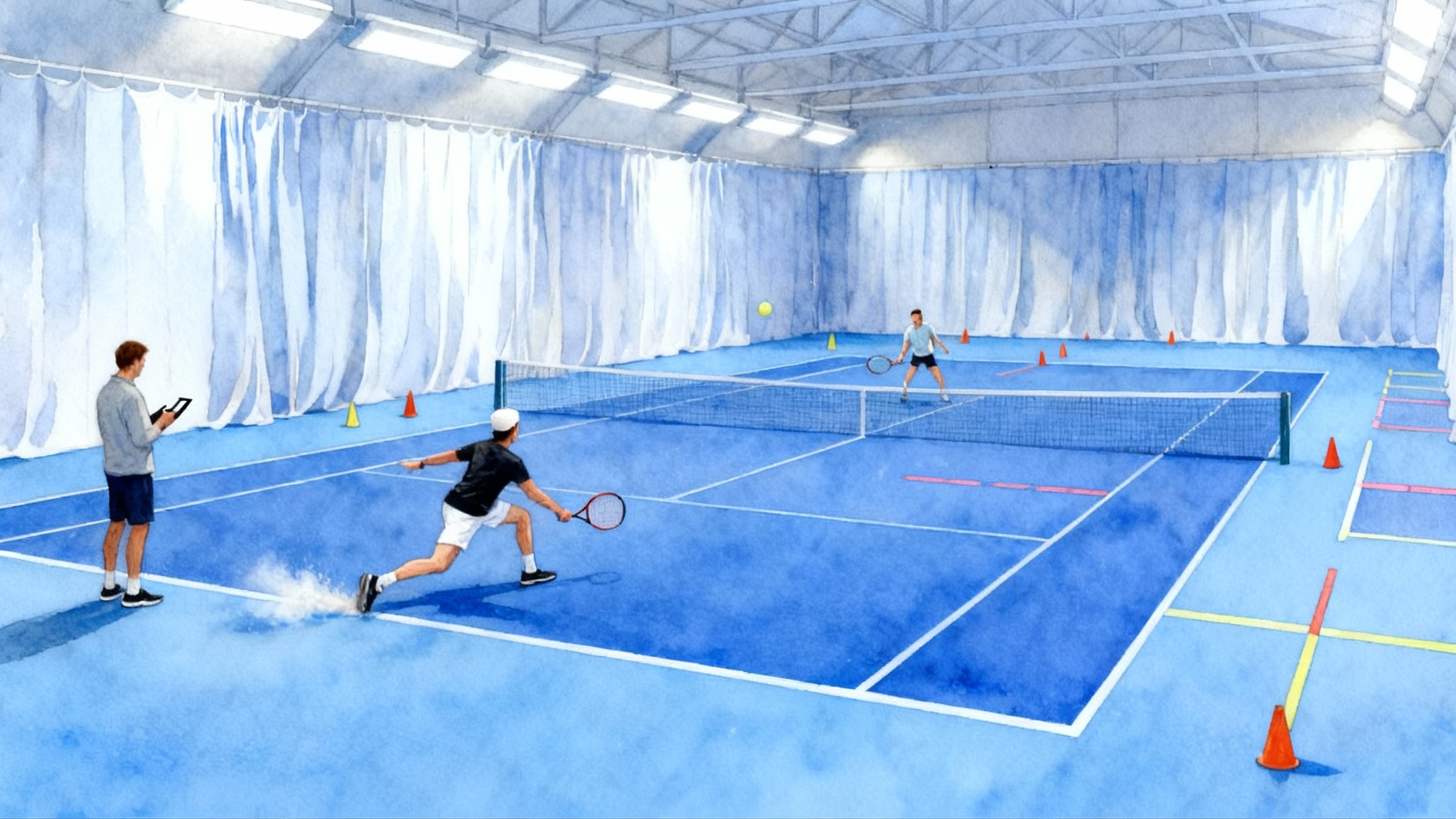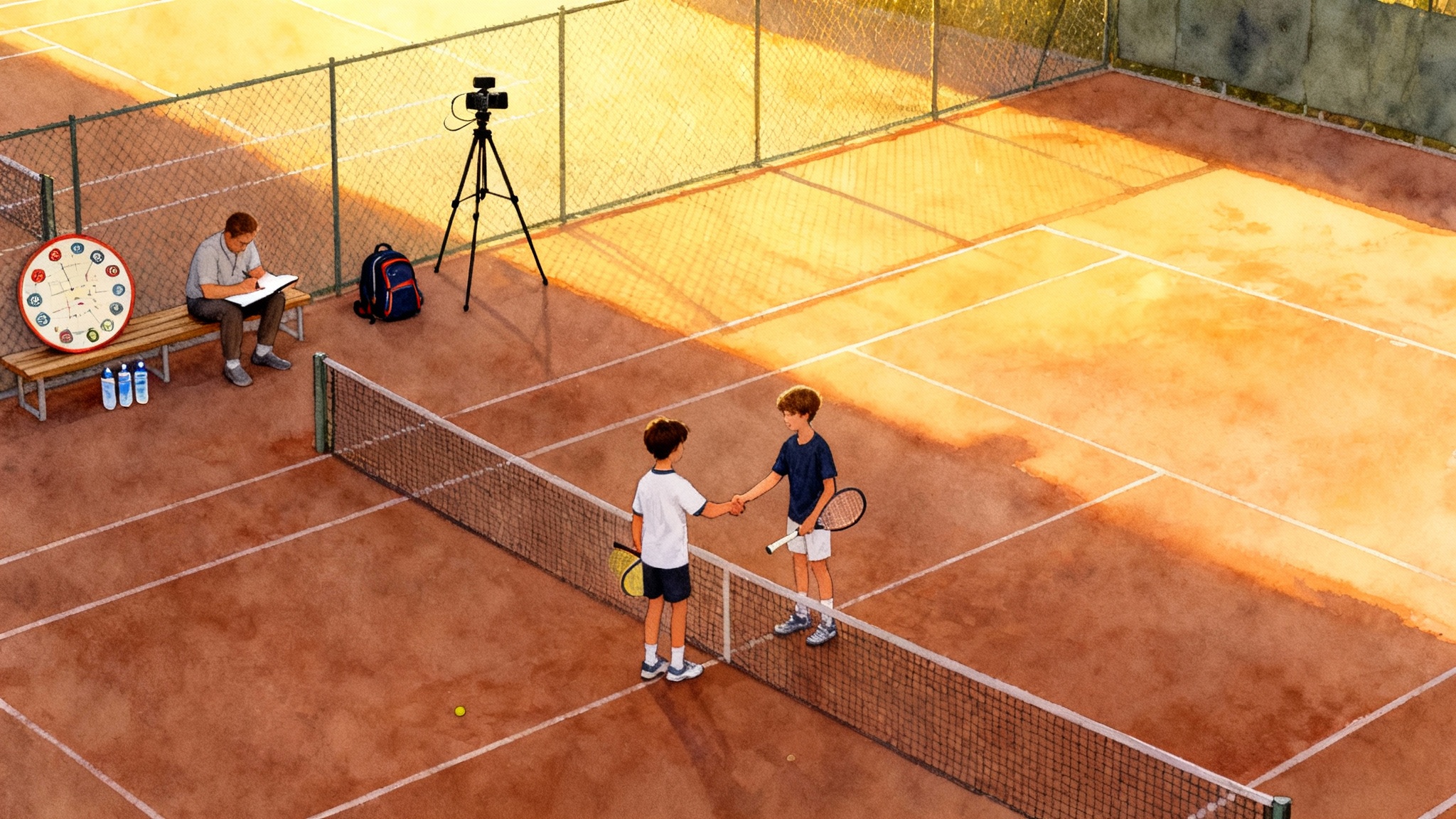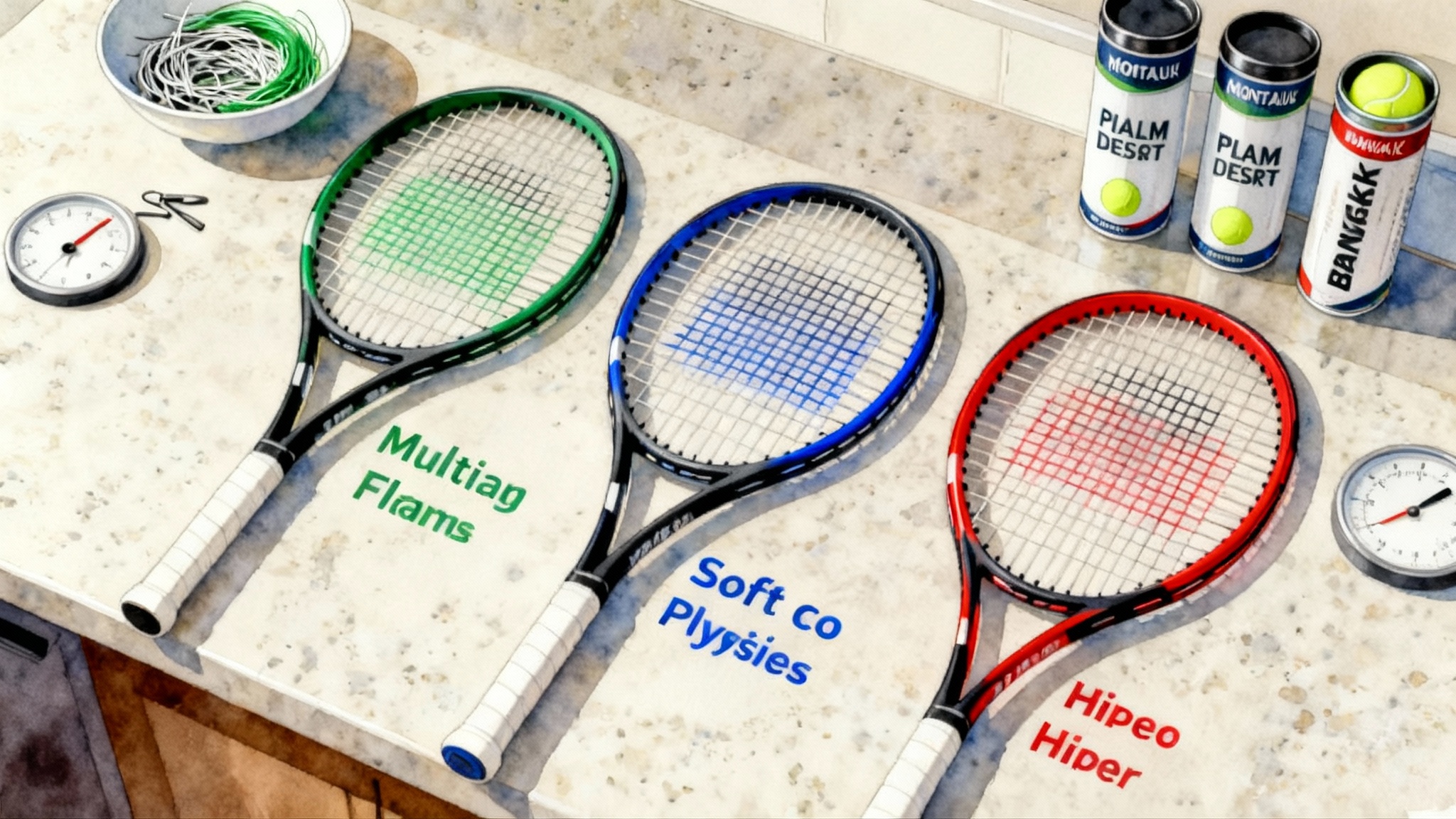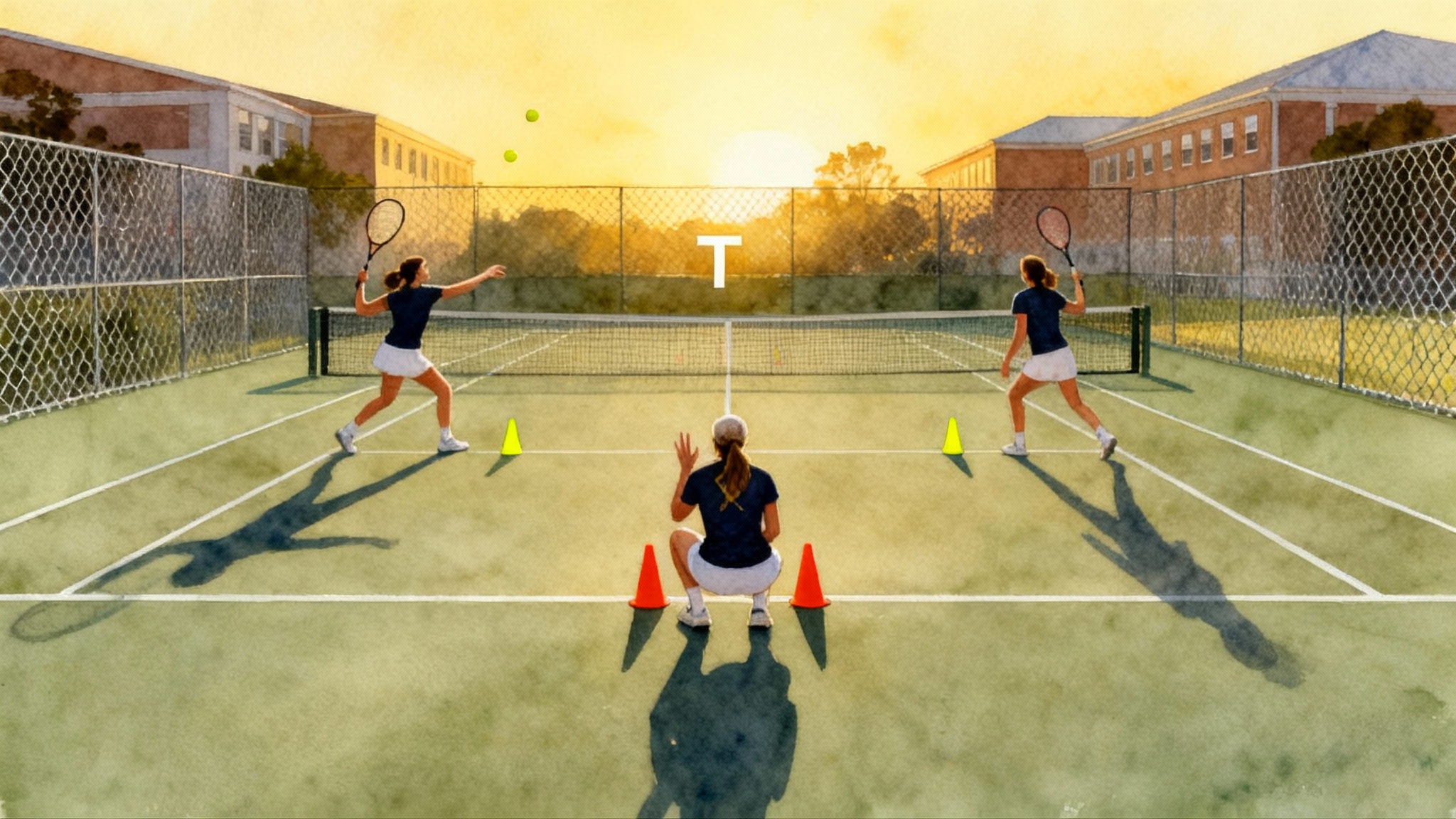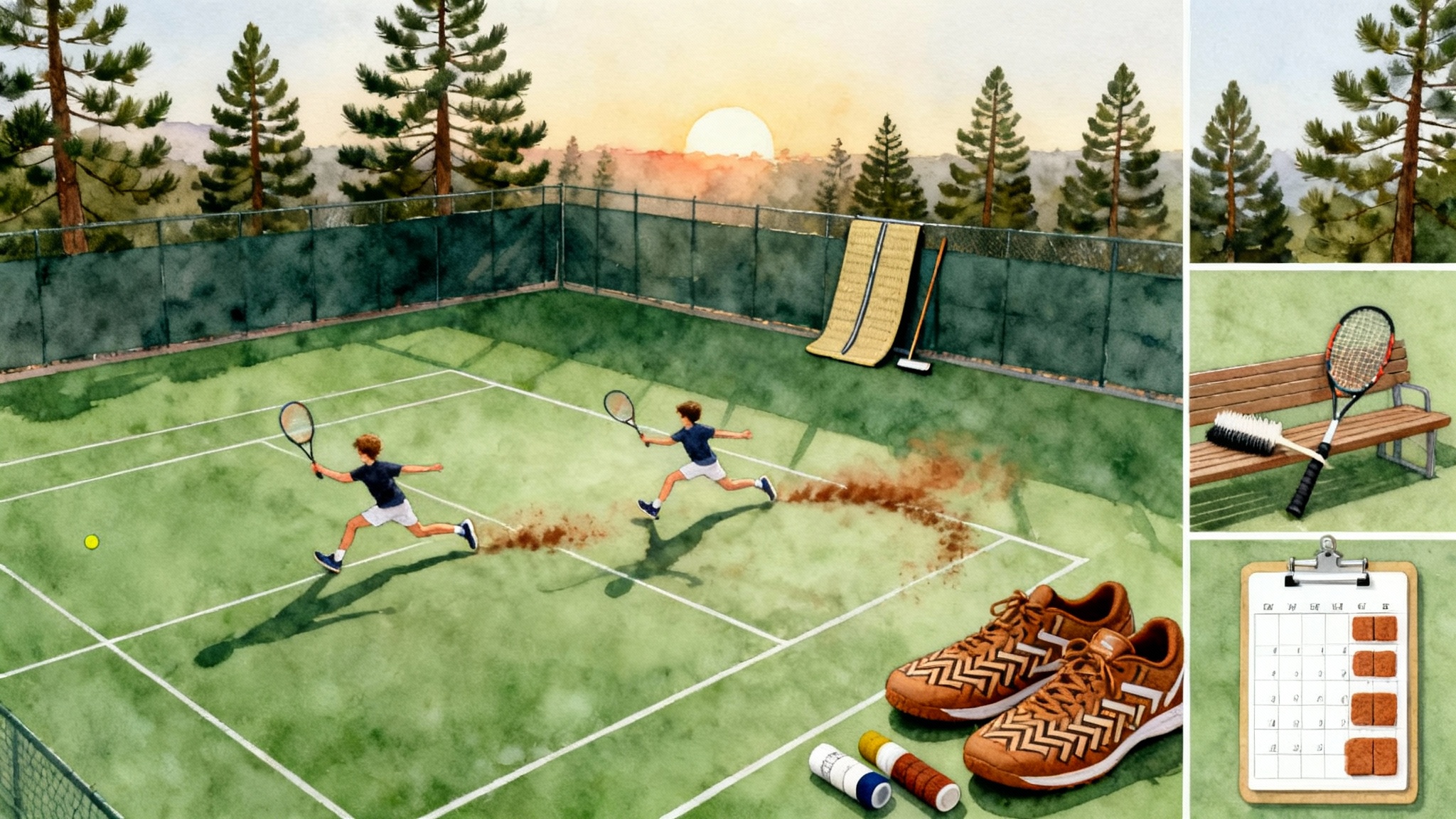The 2025 Tennis Academy Guide: Ratios, Fitness, School Fit
A practical parent and player framework for choosing a tennis academy in 2025. Use our 20-point on-site checklist, sample evaluation-day schedule, and must-ask questions on coaching ratios, fitness, school fit, and tournament support.
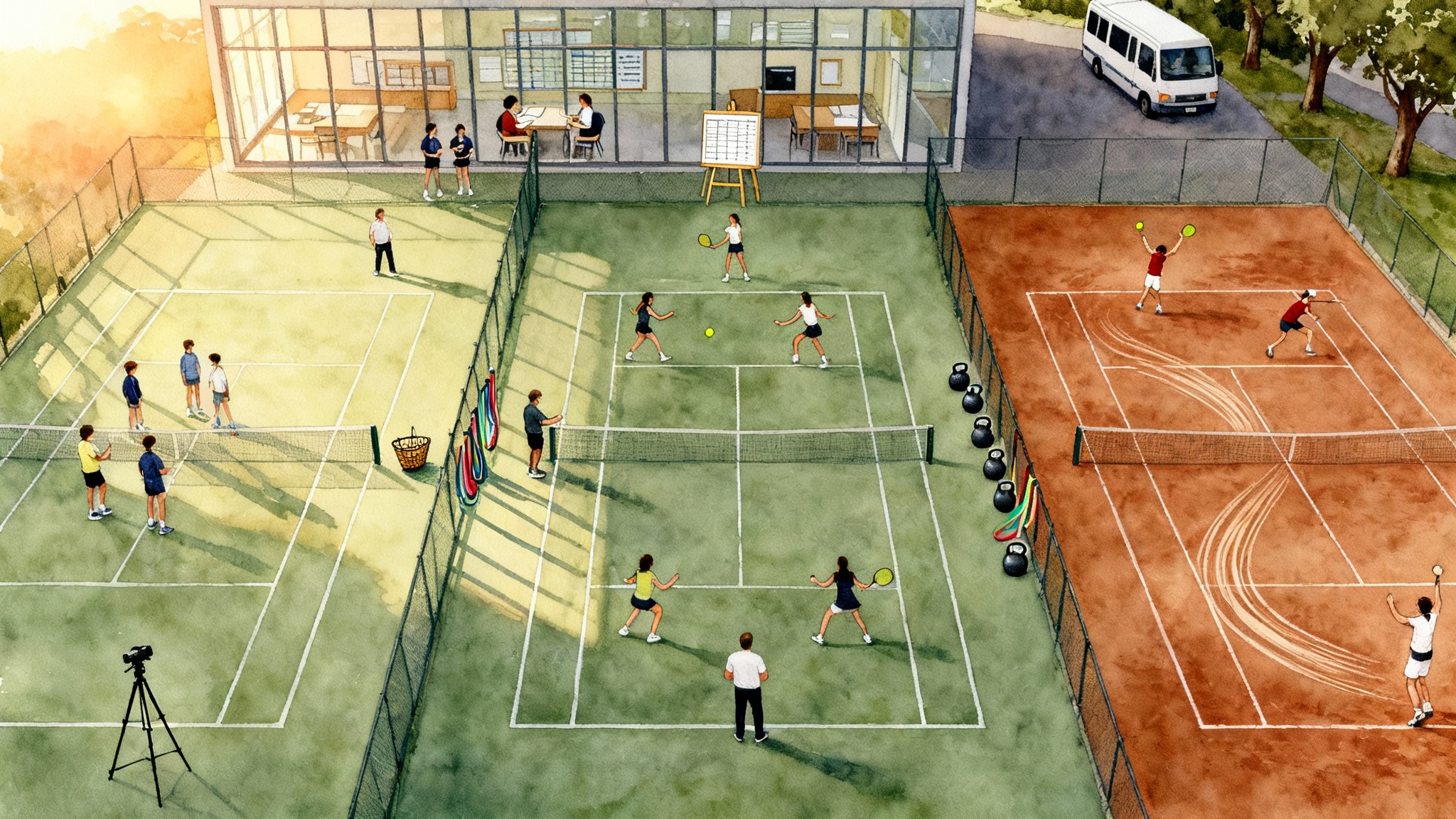
Why 2025 choices feel different
The old way to pick an academy was to watch an practice, check the vibe, and ask a friend. In 2025, the decision carries higher stakes. Academies vary widely in coaching ratios, how seriously they integrate strength and conditioning, whether they coordinate academics, and how they support tournament travel and debriefs. Families also navigate event calendars defined by governing bodies such as the United States Tennis Association, which shape ranking points and scheduling across sections and nationals. If tennis is a multi‑year journey, your first choice sets the map. To keep this simple, we offer a parent and player framework with a 20‑point on‑site checklist, a sample evaluation‑day schedule, and must‑ask questions, illustrated with three contrasting models you can explore on our academy pages.
A quick note on terms: when we say strength and conditioning, we mean a whole system that includes mobility, power, endurance, and recovery. You may see coaches shorten this to S and C. Tournament support means more than booking flights; it includes match coaching permissions, scouting, video analysis, and a plan for when not to play.
For tournament planning basics, start with the USTA junior calendar explained on the USTA junior tournament levels and rankings page. For international play, see the ITF World Tennis Tour Juniors structure.
The four pillars to evaluate
Coaching ratios: the number that changes everything
Coaching ratio is the closest thing to a leading indicator of daily quality. It tells you how much direct time, feedback, and ball‑strike repetition an athlete gets in each session. Rather than chasing a magic number, align the ratio with the goal of the session.
- Technical rebuild: 1 to 1 or 1 to 2 for 30 to 60 minutes to remove noise and engrain new patterns.
- Patterns and decision making: 1 to 3 or 1 to 4 with live ball constraints and targeted feeds.
- Pressure games and fitness under fatigue: 1 to 4 up to 1 to 6 to create variety and competitive stress.
- Large athletic blocks or red‑orange ball: up to 1 to 6 or 1 to 8 if stations are tightly designed and supervised.
A quick way to sanity check a group: divide active minutes by the number of players touching balls at once. If you see eight players in one line hitting two balls per minute, your athlete might only touch 15 to 20 balls in a 90‑minute block. That will not move the needle. If the design uses two courts, two coaches, and four stations, the same 90 minutes can deliver hundreds of purposeful touches.
Must‑ask questions on ratios:
- How do ratios change by session type and age band, and who decides that each week?
- How often do you rotate players to keep 1 to 3 technical work in the mix?
- What is the cap for high performance squads, and what happens when a coach is absent?
- Show me last month’s court plans. How many players and coaches were assigned per block?
Fitness integration: one plan that respects growth and recovery
Athletes do not get better from the training itself. They get better from recovering from the training. Your goal is to see whether the academy treats strength and conditioning and recovery as part of the tennis plan, not a separate afterthought.
Look for:
- Individual screening: movement assessments, mobility checks, and a short injury history at intake.
- Periodization: planned progressions across weeks with clear easy, medium, and overloaded days.
- Warm‑ups that teach: dynamic movement that connects to tennis patterns, not just jogging.
- Strength that fits the age: bodyweight mastery and gross motor skills for preteens; technique‑first lifts for teens; power and sprint mechanics layered only after competence.
- Recovery habits: guided cool‑downs, breathing work, hydration and fueling guidance, and a simple plan for sleep and soreness management.
- Medical access: a network for physical therapy and return‑to‑play decisions when needed.
Must‑ask questions on fitness and recovery:
- Who writes the S and C plan, and how does it connect to the on‑court plan each week?
- What is the progression from general strength to power to speed for a 14‑year‑old?
- How do you monitor growth spurts and adjust training during peak height velocity?
- What recovery is done on site after heavy tournament weekends?
School fit: the daily puzzle of classes and courts
Tennis and school can work together if the academy treats academics as non‑negotiable. There are three common school models that can fit an academy schedule:
- Traditional school near the academy: often best for social life and academic rhythm. Requires early mornings, late afternoons, or weekend training.
- Hybrid or flexible private school: compressed days or alternating schedules that open training windows. Works well for players in heavy tournament cycles.
- Full online program: maximum flexibility, highest risk if not supported with structure.
What matters is whether the academy aligns training blocks with class times, supports study habits, and coordinates with counselors. Look for quiet study spaces, proctored exam options, clear communication with schools, and tutors who understand the demands of travel weeks.
Must‑ask questions on school fit:
- What training blocks are offered that do not collide with typical school hours?
- Do you host supervised study halls, and who runs them?
- How do you help with missed work during multi‑day tournaments?
- For families targeting college tennis, how do you handle transcript planning and NCAA eligibility benchmarks?
Tournament support: schedule, travel, coaching, and debriefs
Tournament support is the academy’s ability to guide the when, where, and how of competition. It starts with the calendar and ends with an honest debrief. You want a machine that can plan blocks of events, travel with players, coach within permitted rules, and convert match video into a targeted training block.
Key elements:
- Calendar design: a ladder from local to sectional to national to international events, adjusted to the athlete’s age and readiness.
- Travel teams: coach‑to‑player ratios off site, and clear costs for travel days.
- Match data: charting templates, serve and return targets, and a debrief within 48 hours.
- Ratings and rankings: a plan that uses UTR and national rankings to choose the right level. These are tools, not goals.
- Off weeks: training blocks purposefully placed to absorb gains and fix patterns.
Must‑ask questions on tournament support:
- Who builds the calendar and how often do we review it?
- What is the exact cost structure for coach travel days and match coaching?
- What is the post‑match debrief process and how does it change the next week’s practice plan?
- How do you decide when to push up a level versus consolidate at the current level?
Three models you will encounter, side by side
Below are three contrasting models that many families encounter. Use them to sharpen what you value. For program specifics and current offerings, visit the academy pages on our site.
College Park archetype: community pipeline with broad pathways
Junior Tennis Champions Center in College Park is often cited as a model for a community‑anchored program that can support both college pathways and players aiming higher. Think of it as a large tree with many healthy branches: a base that nurtures fundamentals, a trunk of strong squads, and branches that reach into national and international events. Explore the JTCC College Park profile.
What this usually looks like in practice:
- Multiple training groups segmented by age and level with thoughtful progression.
- Strong integration with local schools and a culture that respects academics.
- Tournament blocks that mix local wins for confidence with stretch events.
Long Beach archetype: high‑density hard court and frequent competitions
Southern California Tennis Academy in Long Beach represents a coastal model shaped by a deep local competitive scene and a hard court culture. Picture a bustling harbor where ships depart often. The frequent departures are weekend tournaments, inter‑academy match days, and short‑notice play opportunities. See the Southern California Tennis Academy page.
What this usually looks like in practice:
- Slightly larger squads during competitive blocks, balanced by targeted technical sessions.
- High tournament density that rewards quick scheduling and travel lightness.
- Fitness that favors speed, first‑step quickness, and hard court resilience.
Clay‑first archetype: Providence focus on point construction and patience
Providence Tennis Academy stands for a clay‑first approach that builds point construction, patience, and defensive movement. Think of it as learning to write with a fountain pen before using a marker. The slower surface demands clarity of shape and intention. Visit the Providence Tennis Academy profile.
What this usually looks like in practice:
- Technical blocks on height, shape, and depth before pace.
- Emphasis on sliding, recovery steps, and physical endurance.
- Tournament schedules that add hard court events only after a base is set.
The 20‑point on‑site visit checklist
Print this and bring it with you. Score each item 0 to 1. If the total is under 14, keep looking.
- Coaches introduce themselves and learn your athlete’s goals in the first 5 minutes.
- Written court plan visible or shared before practice starts.
- Players move with purpose between stations with minimal standing time.
- Coaching cues are specific and actionable, not just “good job.”
- Ratio fits the goal of the session and is actively managed.
- Technical changes are filmed briefly and reviewed on the spot.
- Warm‑ups are movement rich and tennis specific, not just jogging.
- Cool‑downs include stretching or breath work rather than sprinting to the parking lot.
- There is a posted or sharable weekly training calendar.
- S and C staff speak with on‑court coaches during transitions.
- Players know why they are doing a drill in plain language.
- Study spaces are quiet, supervised, and used by real students.
- Staff can describe a recent injury plan without naming the athlete.
- Parents have a clear communication channel and response time.
- There is a sample tournament calendar for your athlete’s band.
- Coaches ask your athlete questions instead of lecturing nonstop.
- Players pick up balls quickly and return to play without delay.
- Courts, nets, and equipment are well maintained with spares on hand.
- The academy can show a de‑identified post‑tournament debrief example.
- The director invites you to follow up with specific next steps.
A sample evaluation‑day schedule
Here is a realistic schedule you can request for a trial day. The goal is to see how the ecosystem works, not just one session.
- 7:30 to 7:50: Arrival and brief meet‑and‑greet with a lead coach; align the day’s goals.
- 7:50 to 8:10: Movement screen and dynamic warm‑up with S and C staff; note how cues are delivered.
- 8:10 to 9:00: Technical block on serve or forehand; look for clear progressions and feedback loops.
- 9:05 to 9:50: Patterns and live ball; observe decision‑making constraints and point building.
- 10:00 to 10:30: Recovery and snack; quick video review of one key technical item.
- 10:30 to 11:15: Strength session matched to training age; ask about progressions and logging.
- 11:15 to 12:00: Supervised study hall; confirm academic supports and proctoring options.
- 12:00 to 13:00: Lunch with squad; informal culture check and peer fit.
- 13:00 to 14:00: Competitive set play; look for coaching interventions tied to pre‑set goals.
- 14:10 to 14:30: Cool‑down and breathing; note who leads and whether players buy in.
- 14:30 to 15:00: Calendar and school fit chat with coordinator; map three sample tournament blocks.
- 15:00 to 15:30: Director debrief; receive written notes within 24 hours.
Your decision framework: three filters and a scorecard
You can make this decision calmly with three filters and a simple score.
Filter 1: Fit. Does the environment make your athlete want to work tomorrow? That is culture, peer group, and daily rhythm. If motivation feels forced in the trial, it will feel heavier in week six.
Filter 2: Proof. Can the staff show plans, logs, and debriefs that match their words? Proof beats promises. Ask for one anonymized example of a player’s three‑month plan and two tournament debriefs.
Filter 3: Logistics. Commute time, school windows, and travel costs break fragile plans. A great program that you can access three days per week beats a perfect program two hours away that you rarely see.
The scorecard: rate each pillar 1 to 5.
- Coaching ratios and practice design
- Fitness and recovery integration
- School coordination and study supports
- Tournament planning, travel, and debriefs
Add a plus 1 if the culture made your athlete smile after a hard set, and a minus 1 if your gut flagged any safety or communication issues. A 17 or above is rare and promising. Between 14 and 16, the program may be right with a few adjustments. Under 14, keep visiting.
Putting the models to work
Use the models to pressure‑test your choice:
- If you like the College Park archetype, confirm the breadth of squads and the clarity of progressions. Large trees need healthy sap flow. Ask for the traffic plan on busy days and how they protect 1 to 3 technical time.
- If you like the Long Beach archetype, confirm how they prevent burnout. Frequent departures are powerful if recovery is built in. Ask how many no‑tournament weekends they schedule each quarter and what those training blocks focus on.
- If you like the Providence clay‑first archetype, confirm how and when the program adds speed and hard court adaptation. Ask to see a month where the player transitions from clay heavy to mixed surfaces.
Final take
The right academy in 2025 is not the one with the loudest reputation. It is the one that can show you, on paper and on court, how coaching ratios, integrated strength and conditioning, academics, and tournament support come together for your athlete. Use the checklist to see the work, not just the talk. Run the evaluation‑day schedule so you can witness the system in motion. Ask precise questions until the answers are plain. When your visit ends and your athlete is already planning tomorrow’s session, you will know you have found the right place to grow.
